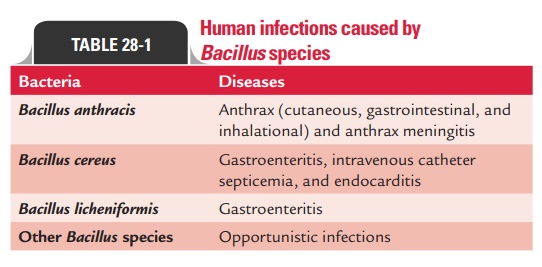Chapter: Microbiology and Immunology: Bacteriology: Bacillus
Bacillus: Introduction
Bacillus
Introduction
The family Bacillaceae consists of rod-shaped Gram-positive bacteria that form endospores. The family includes two main groups of spore-forming bacteria:
· The anaerobic spore-forming bacteria of the genus Clostrid-ium and
· The aerobic or facultatively anaerobic spore-forming bacte-ria of the genus Bacillus.
The genus Bacillus is frequently known as aerobic spore bearers. They are ubiquitous and are present in soil, dust, air, and water. These bacteria are also frequently isolated as contaminants in bacteriological culture media. The genus Bacillus consists of more than 50 species. Bacillus anthracis and Bacillus cereus are the two most important species that cause infections in humans and animals. B. anthraciscauses anthrax, while B. cereus causes food poisoning. The human infections caused by Bacillus spe-cies are summarized in Table 28-1.

Related Topics